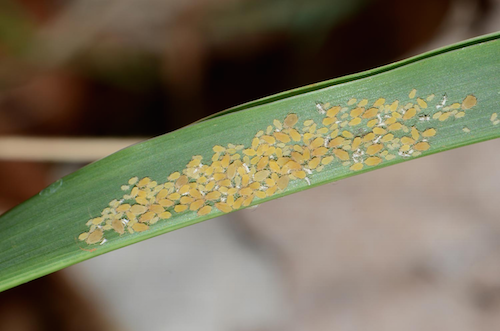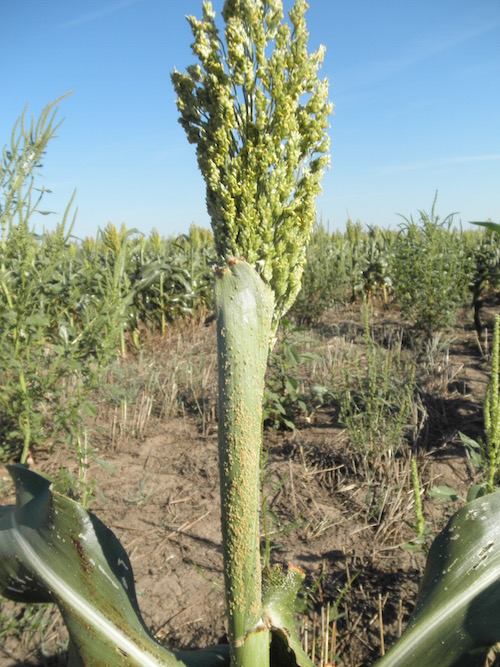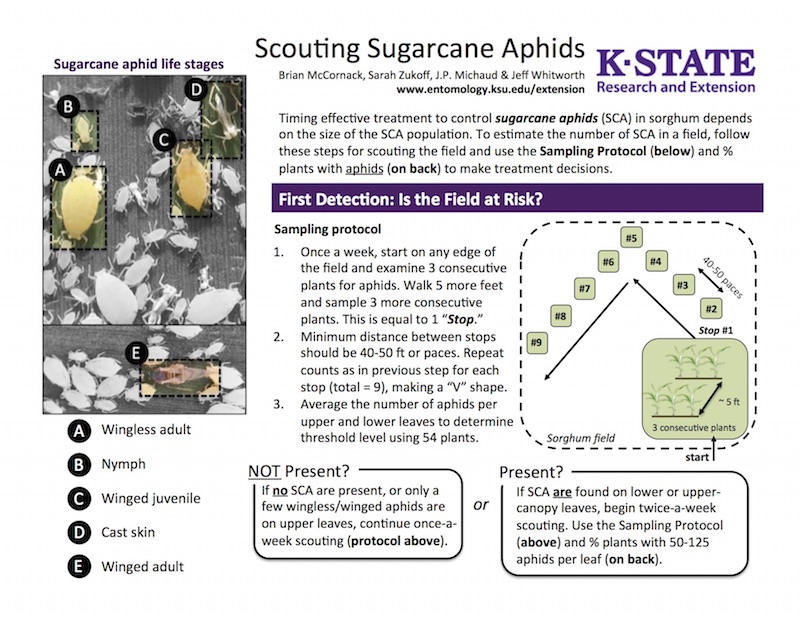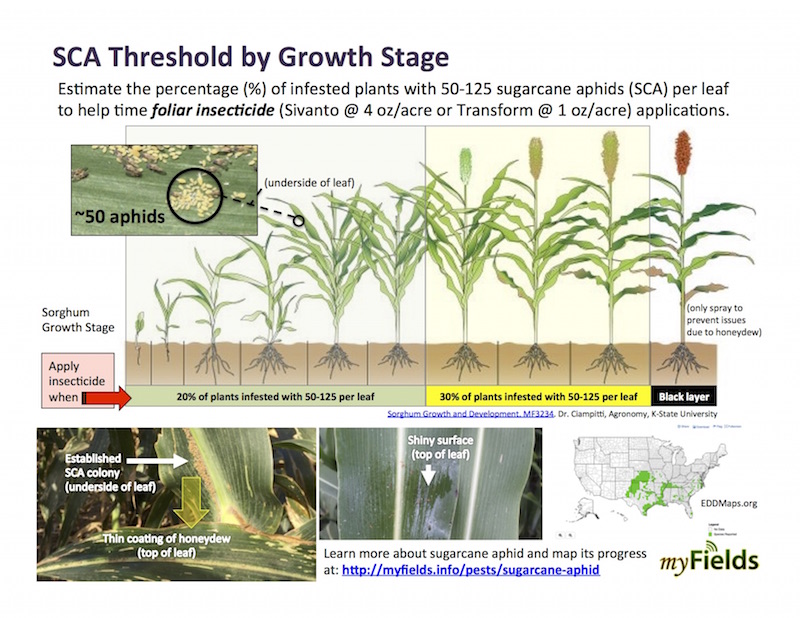Sugarcane aphid
Download our new sugarcane aphid scouting guide for Kansas here!
Sugarcane aphids are capable of very high rates of reproduction and produce copious amounts of honeydew. Scouting should begin mid-July and continue until sorghum reaches physiological maturity, as sugarcane aphids will feed in panicles right through grain fill.

Sugarcane aphids colonies develop on the undersides of sorghum leaves. Leaves below infested ones will be covered in honeydew (aphid excretion) and will have a shiny appearance. Sooty mold may grow on the honeydew after a period of time.

Shiny honeydew on leaf is a easy way to detect these aphids (left). These leaves become colonized by sooty mold and shed skins of the larvae after a period of time (right).

Sugarcane aphids about to infest emerging panicle.
There are several similar species on sorghum that could be confused with the sugarcane aphids especially when the aphids are young. The SCA has a smooth body with a light colored head and light colored legs with dark feet. They have dark colored, short cornicles (tail pipes) with no shading at the base of them as on the corn leaf aphid.

1. sugarcane aphid
2. corn leaf aphid nymph
3. corn leaf aphid nymph
4. english grain aphid
5. sugarcane aphid
6. yellow sugarcane aphid
Timing effective control for SCA in sorghum depends on the size of the populations. To estimate the number of SCA and determine if management is needed in a field, follow the guidelines in our new Scouting Sugarcane Aphid guide.
For more great info on the sugarcane aphid, visit myFields!


Sarah Zukoff & J.P. Michaud, last updated 7/11/2017.